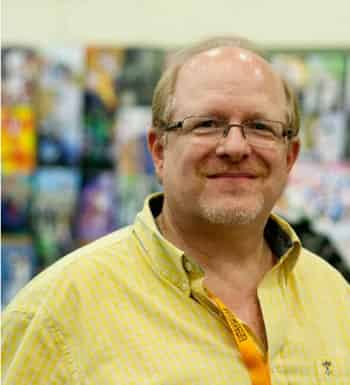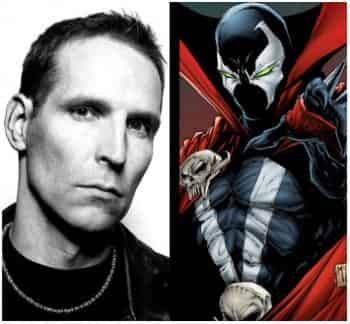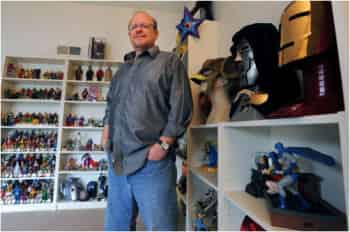
Webcomics
L’art de l’autopromotion
Dans des billets précédents, nous parlions de la tendance à l’autoproduction (le do it yourself). Nous plaidions que cette formule permettait d’éviter de payer des intermédiaires dont la valeur ajoutée pouvait être discutée. Parallèlement, nous admettions les limites de cette formule alors que l’on peut exceller sur toutes les facettes d’un projet de comicbook.
Todd Allen stipule qu’une qualité majeure dans l’autoproduction est …l’autopromotion. « It depends a little on what your profile is and how good a person is at promoting themselves » («C2E2: Digital Comics: The Next Page», www.comicsbeat.com, April 29, 2014). Cet exercice n’est pas aussi simple à résoudre. Mark Waid qui est impliqué dans le projet Thrillbent, une plate-forme de diffusion de webcomics fait le constat suivant :
« There are four factors to selling anything: content, distribution, publicity, and marketing. We are great at content; we are good at distribution. Because of the limited amount of time in the day, however, marketing and publicity is where we fall down. That’s no fault of the people at Thrillbent behind the scenes; that’s on me – I don’t have as much time as I’d like to pound the drum and get people to swarm to our site. » (« Interview: Mark Waid on the Inner Demons of Daredevil, Attitude Adjustment for the Hulk, and the Thrill of Digital Comics », www.comicsbeat.com, February 10, 2014).
Nous ne cherchons pas d’excuses, mais si l’effort de promotion présente ses limites pour un artiste établi comme Mark Waid, il devient un enjeu majeur pour le commun des mortels.
Qu’est-ce qu’un digital comics?
Encore une fois, nous revenons à Mark Waid pour offrir une réponse à cette question. En fait, Waid précise ce que n’est pas un digital comics :
« Waid immediately jumped in, saying they aren’t cheap animation and that “motion comics are the devil’s tools.” His followup points demonstrated a thoughtful approach. He thinks that what makes comics comics is the reader’s ability to determine the pace of the story. The ability for the reader to fill in the voices and what happens in the gutters, using imagination, makes comics an immersive medium. » («C2E2: Digital Comics: The Next Page», www. comicsbeat.com, April 29, 2014).
En même temps, certains analystes considèrent qu’il est plus difficile de perdre de l’argent avec une édition numérique qu’avec une édition papier (Janelle Asselin, « The Economics of Digital Comics: Journalist And Educator Todd Allen On His Important New Book », www.comicsalliance.com, July 15, 2014). Personnellement, nous nuançons cette affirmation. Si vous faîtes tout de A à Z, nous concédons que le comicbook numérique sera plus économique. Mais quelle forme souhaitez-vous donner à votre version digitale? Si vous ne reprenez que des architectures existantes, oui, vous économiserez. Cependant, la concurrence numérique est très intense et elle se joue à deux niveaux selon nous : 1) nous croyons que l’architecture numérique doit se démarquer de différentes façons permettant d’exploiter le plein potentiel d’Internet. 2) Internet impose une cadence de diffusion afin de capter et de conserver l’intérêt du lecteur. Et dans les deux cas, cela demandera des investissements.
Internet, format et nature de l’action
Mark Waid introduit deux idées intéressantes, qui de notre point de vue, se confondent. La première, qui n’est pas vraiment nouvelle, « Remember: this is what media does. Radio up until the 1960s was two or three formats. Now it’s a million formats. Television? Same thing. Three channels becomes a hundred channels. Any medium eventually fragments out towards a wider base of people where each individual fragment does what it has to do to survive on its own. It doesn’t have to appeal to the wider base. In retrospect, it’s kind of amazing and surprising that something that’s been around for 75 years like print comics hasn’t sort of gone through that same dissolution. Instead it’s put all of its eggs into the one basket. » (“CR Holiday Interview # 22 – Mark Waid”, January 10, 2013, www.comicsreporter.com). Cette situation favorise donc l’atomisation des goûts, le consommateur peut trouver plus aisément un produit qui lui plaira. En contrepartie, il est possible que ce même marché soit plus petit, car il ne rejoindra pas un vaste marché. Arrive ici un autre enjeu, celui de la rentabilité de tels projets ou plus concrètement comment contrôler ses coûts.
Cependant, d’un point de rédaction, il devrait y avoir une bonne adéquation entre l’histoire et son format de diffusion. C’est ici que Waid apporte un second point de vue plus original lorsqu’il déclare : « “That’s what you have Marc Guggenheim for. That’s what you have comics writer Marc Guggenheim slash lawyer Marc Guggenheim for. He’s on speed dial. I take the same approach that Stan and Gerry Conway and a lot of other guys who’ve written Daredevil in the past have taken, that is that you want to try to be very, very faithful to the law, but not to the point where it stifles your story. And you kind of have to give it some leeway. Especially nowadays, nobody wants twelve pages of Matt Murdock in a courtroom, because comics don’t do that well, television does it better and for free.» (Christine, “Mark Waid talks Daredevil at Baltimore Comic Con”, September 7, 2013, www.theothermurdockpapers.com). Il y aurait donc des formats plus adaptés, plus naturels, pour explorer certaines thématiques ou disons certaines mises en scène. Voilà des propos à méditer.
L’autopromotion
Deux décennies avant qu’Internet ne permette des publications Web, Todd McFarlane avait identifié les principaux bénéfices de l’autoproduction : « I don’t got no lawyers. I don’t got no PR people. I don’t got no licensing people. I ain’t got shit! I hate to say it but I just proved that half those jobs at Marvel and DC are worthless. They could get rid of all of those guys and it’s not really going to affect the sales of their comic books, if you’re doing a comic book that taps into the heart of what the kids want right now. You don’t need a battery of people to produce big sales. What you need is a comic book that’s either good, glitzy, or happens to be tapping into whatever’s hot that week. » (Gary Groth, “…That’s the Spice of Life, Bud”: The Todd McFarlane Interview”, The Comics Journal #152, août 1992).
Les efforts de promotion
Voici de larges extraits d’un article d’Hannah Means-Shannon qui rapportait les propos faits par différents intervenants commerciaux de diverses firmes de comics book lors du Wondercom 2013) :
- Trying different approaches and continuing to do so as long as possible is key;
- Knowing the pitch well, and the many angles from which it might be interpreted, breaking out of narrow genre definitions, for instance, may win the day;
- You have to believe in what you’re selling” and believe that you are “one of the best advocates for it”.
Commercialiser ses personnages au risque de les fossiliser
Dans cette recherche du profit accessible grâce à des publications web, Mark Waid énonce un point de vue, fort intéressant : « Waid commented that the tendency toward merchandizing may encourage the slow-down or freeze of new developments in a character since “every character becomes a beach towel” in the end. » (Hannah Means-Shannon, “On the Scene: WonderCon 2013”, comicsbeat.com, 30 mars 2013.).
Ce simple commentaire met en relation les difficultés de la rentabilité financière avec les efforts d’intégrité artistique.






